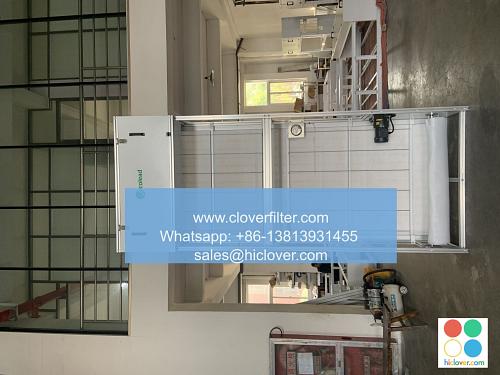Introduction to Automatic Roll Air Filters in CDC Biosafety Labs

Overview of Biosafety Labs and Air Filtration
Biosafety labs, particularly those governed by the Centers for Disease Control and Prevention (CDC), require stringent air quality control to ensure a safe working environment for researchers and to prevent the spread of harmful pathogens. One of the critical components in maintaining clean air is the use of air filters. Among the various types of air filtration systems, automatic roll air filters have emerged as a preferred choice due to their efficiency, convenience, and cost-effectiveness. These filters combine advanced filtration technologies with the practicality of automatic replacement systems, creating a seamless and reliable air purification process.
Technological Advancements and Key Features
Automatic roll air filters leverage cutting-edge HEPA (High Efficiency Particulate Air) filtration technology, which is capable of removing 99.97% of particles as small as 0.3 microns from the air, including dust, pollen, and other harmful pathogens. The “roll” aspect of these filters refers to their design, where filter media is rolled onto a reel, allowing for continuous operation. As the filter becomes saturated with particulates, it automatically advances to a new, clean section, ensuring uninterrupted filtration. This automatic roll change technology simplifies maintenance, reduces labor costs, and minimizes downtime, making it an attractive solution for biosafety level 2 (BSL-2) and biosafety level 3 (BSL-3) laboratories.
Applications and Benefits
Automatic roll air filters find application in various areas within CDC biosafety labs, including:
– Laboratory workstations to protect researchers from aerosolized pathogens.
– Animal facilities to control airborne diseases and maintain a clean environment for research animals.
– Cleanrooms and controlled environments where the absence of airborne particles is crucial for the integrity of the research or manufacturing process.
The benefits of these filters are multifaceted, offering enhanced indoor air quality (IAQ), reduced maintenance and operational costs, and increased compliance with regulatory standards such as those set by the CDC and the National Institutes of Health (NIH). Furthermore, the automation aspect reduces human error and the risk of exposure during filter replacement, aligning with biosafety and biosecurity guidelines.
Challenges and Future Directions
While automatic roll air filters represent a significant advancement in air purification for biosafety labs, there are challenges to consider, such as the initial investment cost and the need for regular monitoring to ensure the system operates within prescribed parameters. Future developments are also likely to focus on energy efficiency, sustainable materials, and integration with smart lab technologies to further optimize performance and reduce environmental impact.
Conclusion
In conclusion, automatic roll air filters are a vital component in the arsenal against airborne pathogens in CDC biosafety labs, offering a powerful combination of efficiency, reliability, and automation. As technology continues to evolve, the application of these filters is likely to expand into new areas, further enhancing the safety and productivity of biosafety laboratories worldwide. By understanding the role and benefits of automatic roll air filters, lab managers and researchers can better navigate the complex landscape of biosafety and biosecurity, ultimately contributing to advancements in medical research and public health.

